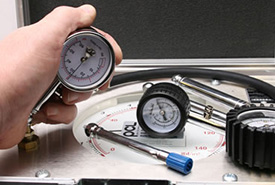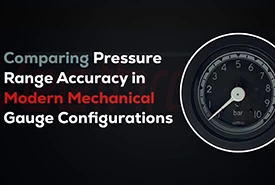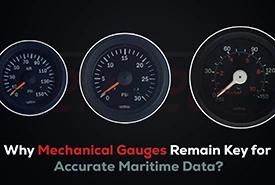- Free shipping for NZ Customers. All items are available in NZ warehouse
- +64 (0) 212576146
- [email protected]
Maintain your gauge effectively

When should you change your gauge?
December 16, 2019
Gauge accessories
January 22, 2020A gauge is a mechanical instrument and like all mechanical instruments, a gauge is prone to wear and tear. For the most part, wear and tear can be avoided by following simple steps. However, basic wear and tear cannot be avoided, and therefore you must pay attention to calibration. After all, it is not very difficult to maintain your gauge to avoid unnecessary mishaps and costs. If you do not want to spend time and money calibrating your gauge every couple of weeks, you just need to be about a few things:
- Never leave your gauge in contact with oil or dirt for extended periods of time. Both these substances can harm your gauge in ways that the human eye cannot see. Yes, oils can harm your gauge too, granted, they are good to clean, but one should not leave oils in contact with gauges for long periods of time - this includes skin oils too!
- Use your gauge within its mechanical limits. Many times, gauges break down or tend to malfunction if they are being used in unfavourable conditions. Mechanical limits are absolute. One simply cannot use a gauge outside of its limits and expect it to work perfectly. For example, if the gauge has come with instructions to be used under 100 degrees Celsius and it is being used in temperatures above this limit, some internal parts of the gauge might start to melt which will cause the gauge to show incorrect or inaccurate values and thus cause trouble.
- Make sure your staff handles the gauge correctly. As the owner, one might know the usage and limits of the gauge they are purchasing. But it is necessary to explain the same to the one who is going to use it! On many occasions, the staff has little to no knowledge of how to use the gauge or are ignorant towards its limits. This causes unnecessary damage to a gauge that would have worked perfectly if not for the mishandling.
- Calibrate your gauge. It is imperative to calibrate any gauge from time to time so that any damage which cannot be identified by the human eye may be rectified. With precision gauges, this happens a lot. Precision gauges give information in sizes the human eye cannot recognize. Wear and tear at this level is also difficult to identify. Thus, every gauge must be checked and rectified mechanically from time to time to avoid any mishaps.
All in all, these are just a few tips to help you maintain your gauges more effectively. For the latest on gauges, reach out to us at https://veethree.co.nz




